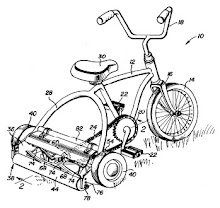It's a staggering triumph of product design when you can get 80% of the functionality correct for most people right out of the box. Only a small number of nitpickers and control freaks are ever going to change a product's settings from the default. The iOS persistent launcher, for example, shows the four most frequently used apps and those apps have a consistent, balanced visual feel. A spot check of my tech-savvy office shows that almost nobody has changed the default.

Android's icon design standards have been thoughtfully criticized elsewhere. Since the OS gives developers the freedom to add an alpha channel, icons can theoretically be almost any size or shape. Even Google's own in-house designs vary from 72 to 94 pixels tall. Android's style guide calls for a "distinct silhouette" and a "slight perspective" that can result in a busy look to my eye: (This was my persistent launcher bar before the Beautification Project.)

The glory of open systems, though, is that if you don't like something you usually have the ability to change it. The "holo" theme for in-app menu bar icons is a marvel of minimalist simplicity, calling for "pictographic, flat... smooth curves or sharp shapes." Nova Launcher (root not required) enables complete replacement of app and folder icons, so I swapped out the launcher icons for their closest action bar equivalents:

Aaaaah much better. This set has only two heights, one radius, and one color. We've gone from the colorful, chaotic riot of a third grader's birthday party to the elegant simplicity of a pinstripe suit. This level of under-the-hood tweakability may only matter to 2% of users, so it's not really a selling point for the mass market. But as one of those 2%, it matters to me.
In all fairness, icon customization is also possible (if involved) on iOS without jailbreaking.


 Dropbox has announced an
Dropbox has announced an



